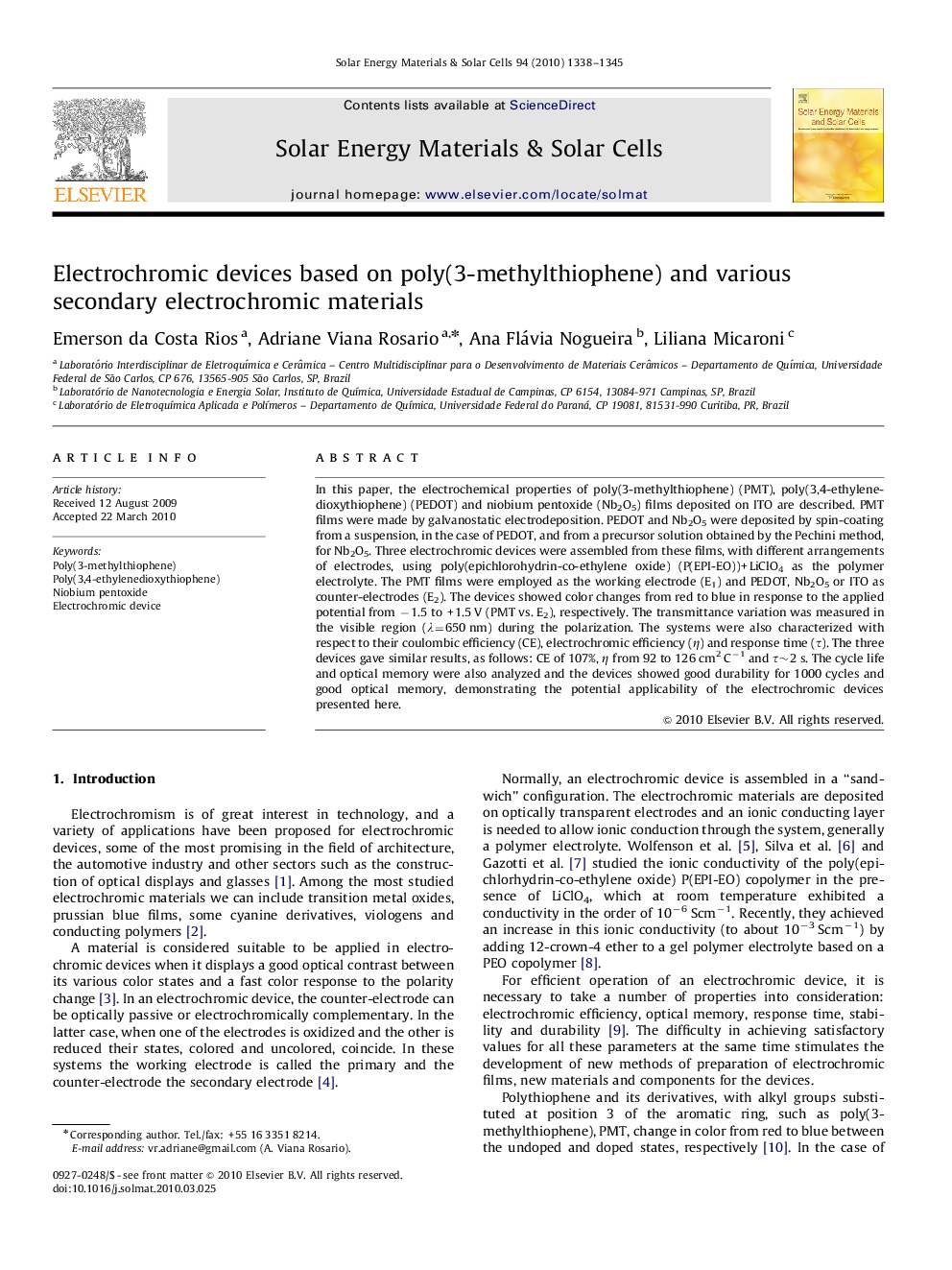| کد مقاله | کد نشریه | سال انتشار | مقاله انگلیسی | نسخه تمام متن |
|---|---|---|---|---|
| 79680 | 49363 | 2010 | 8 صفحه PDF | دانلود رایگان |

In this paper, the electrochemical properties of poly(3-methylthiophene) (PMT), poly(3,4-ethylenedioxythiophene) (PEDOT) and niobium pentoxide (Nb2O5) films deposited on ITO are described. PMT films were made by galvanostatic electrodeposition. PEDOT and Nb2O5 were deposited by spin-coating from a suspension, in the case of PEDOT, and from a precursor solution obtained by the Pechini method, for Nb2O5. Three electrochromic devices were assembled from these films, with different arrangements of electrodes, using poly(epichlorohydrin-co-ethylene oxide) (P(EPI-EO))+LiClO4 as the polymer electrolyte. The PMT films were employed as the working electrode (E1) and PEDOT, Nb2O5 or ITO as counter-electrodes (E2). The devices showed color changes from red to blue in response to the applied potential from −1.5 to +1.5 V (PMT vs. E2), respectively. The transmittance variation was measured in the visible region (λ=650 nm) during the polarization. The systems were also characterized with respect to their coulombic efficiency (CE), electrochromic efficiency (η) and response time (τ). The three devices gave similar results, as follows: CE of 107%, η from 92 to 126 cm2 C−1 and τ∼2 s. The cycle life and optical memory were also analyzed and the devices showed good durability for 1000 cycles and good optical memory, demonstrating the potential applicability of the electrochromic devices presented here.
Journal: Solar Energy Materials and Solar Cells - Volume 94, Issue 8, August 2010, Pages 1338–1345